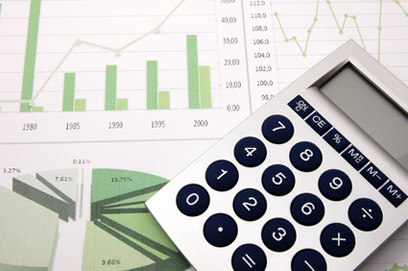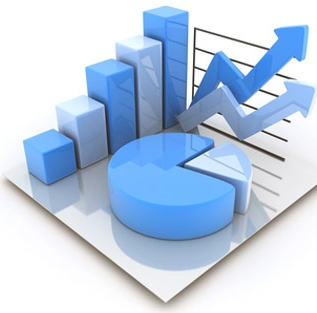Accounting is an integral component of managing any large business. And this type of activity, according to many economists, is not just reporting to the tax. This is a whole science. And the development of its basics can be of great help in terms of business development.
There are separate objects and methods of accounting, a large number of tools and approaches supplementing them. How can a firm engage them? What are the most common accounting methods? What could be their practical usefulness?
About accounting
Before we study accounting methods, let’s talk, in fact, about the subject of our discussion. What is accounting? What tasks does he solve?
Accounting, according to the definition common among Russian economists, is a system of monitoring and control over the financial and economic activities of an organization. If, as such, accounting is, in fact, fixing numbers on paper, combining them into “books” (German Buch) and secure storage (German Haltung), then, together with the accounting function, it forms a system that allows you to use financial data to extract practical benefits for the enterprise.

In addition to numbers reflecting cash flows in certain areas of the organization’s functioning, accounting collects other kinds of significant information - labor or, for example, of a natural nature. However, accounting considers all economic processes as operations in price terms. As a result, the company, using various accounting methods, receives tools that allow optimal allocation of resources and increase the profitability of the business.
Accounting structure
Accounting consists of two main components. Which at the same time form a single system. In fact, these are subspecies of accounting, namely financial and managerial. What is the difference? What specifics do accounting financial accounting methods have, and which are typical for managerial?
We answer the first question. Within management accounting work is underway with information intended for use by company management structures. The purpose of its receipt, analysis and interpretation is to improve the mechanisms of interaction between management and subordinate units, its effective planning. The monetary component in the circulation of this kind of information can be both very significant and occupying a very small percentage - it all depends on the specifics of a particular enterprise.

Financial accounting mainly works with information that is used not only in the internal structures of the organization, but also is involved in the process of communication with external entities.
Since in most cases this interaction is based on relations in commodity-money forms, this kind of accounting is called financial.
But the information that is processed within the framework of his methodology is not necessarily just monetary numbers (although, of course, such an absolute majority).
At the same time, the researchers clearly do not draw a clear line in the Russian methodological school that studies accounting problems between the financial and managerial aspects.We are talking about two, of course, heterogeneous phenomena, but there are a large number of related processes related to both the one and the other. A simple example: payroll and bonuses to staff. There are elements of both financial - in the aspects of calculating numbers in relation to the expenses of the company, and management accounting - in such components as staff motivation or, for example, improving the personnel component of the business model.
Terminology Amendments
It is very important, before continuing to study various aspects of accounting, to determine the conceptual apparatus. The fact is that the term “method” has several meanings, depending on the context. And therefore, in some cases, confusion may arise with its interpretation. Almost equally sounding phrases can be related to completely different phenomena.
A simple example is the phrase “accounting method”. Its meaning will vary greatly depending on the specific context. The main criterion here is how much the word "method" is used. If only, then the possible interpretations of the phrase are as follows:
- actually "accounting" as an independent procedure;
- one of the accounting tools.
If the word "method" is used in the plural, then it will be correctly identified with the meaning of the second option. That is, if we write "accounting methods", we mean the tools for its maintenance. In turn, when working with the term in the singular, you need to read the context. Depending on it, under the "accounting method" we can understand accounting as such or, again, one of the tools for its maintenance.
About the subject and methods of accounting
What is the subject and method of accounting? Regarding the first phenomenon - there can be many options. And before disclosing them, we will first determine what an accounting object is. Most often, it is understood as one or several structural economic units inside the company or outside it (but directly related to the firm's activity) that generate data that is useful to accounting to one degree or another.
Most often, these are, of course, numbers - for profits, losses, salaries, loans, etc. Actually, the object of accounting is the specific actions of the object or the results of their implementation, events and other important ones from the point of view of current goals and objectives before an accountant, facts. The subject and method of accounting are interdependent. The properties of the first are determined by the essence of the second. Accordingly, the characteristic of the accounting method used in a particular case completely depends on the subject being studied.
Now, actually, what accounting methods are. We immediately recall the differences in the interpretation of the term, which we have indicated above. Here it is used in the plural. That is, we mean accounting methods. What are they?
In the generally accepted interpretation by Russian economists, it is customary to consider as such a set of methods by which generalization (or, conversely, detailing) of information related to accounting activities is carried out. In practice, accounting methods are used, as a rule, in the course of solving problems associated with the management of an enterprise. And in some cases - for reporting and analytical purposes (for example, when the task is to show the success of the business model for investors or the correctness of spending budget funds before departments).
Method Elements
What are the main elements that form accounting methods? Experts distinguish their following main varieties:
- Observation. The main object here is the procedures associated with the performance of certain functions by various sections of enterprises in the field of financial and economic operations.Using this method, the corresponding accounting structure can verify how correct the practical mechanisms implemented by employees are, and to what extent they reflect the rules and norms adopted at the corporate or legislative level.
- Measurement. This approach involves the identification of numerical indicators related to financial and business operations. And this is its main difference from observation, in which processes are monitored for compliance with rules and norms, but not so much attention is paid to numbers. The subject of measurement is almost always monetary indicators (in terms of income and expenses).
- Generalization and detail. This kind of procedure can be both statistical and analytical in nature, depending on what the task is for the accounting structures of the enterprise. For individual processes in a specific period of time, priority may be generalization, for others - detail.

As a rule, all these elements of the accounting method are integrated. But some of them may be the main one. At the same time, it is not always possible to draw a clear border between them. For example, if in the process of involving such an element of a method as observation, calculation procedures are used, then with high probability we will talk about measurement.
Accounting Methods
Consider the basic accounting methods that are used by Russian financiers. Once again, we make an amendment to the fact that we mean the conduct of the relevant procedure, and not its essence.
- Documentation. This accounting method is used when the task is to fix the facts that are significant in terms of assessing the financial and economic activities of the enterprise. This procedure is carried out using standardized forms of documents (approved by law or at the level of corporate regulations).
- Inventory. This tool allows you to monitor the amount of property available to the enterprise. Some experts believe that inventory is an element of the accounting method. There is a "compromise" point of view. In accordance with it, the inventory as a method of accounting is a full and well-established component of housekeeping. The main criterion here is this: not only is the calculation of disposable property, but also possible obligations for its transfer by the organization in favor of third parties and the identification of other prospects for the use of resources. However, if the inventory plays the role of only a calculating tool, then in this case it is still an integral element of the method (in this case, the documentation, the first one on our list).
- Rating also considered a common accounting method. Is it more statistical or, rather, an analytical tool? Some experts believe that the former prevails, arguing that the assessment is, first of all, a set of strict rules that do not require any additional conclusions upon their use. The result of using this tool will be only statistics. But there is another point of view. According to it, the assessment may contain elements of the accounting method with properties that allow you to study not only the current statistical data, but also interpret them and predict their impact on business processes. That is, analytical work is also implied here.
- Costing. This kind of tool is mainly used for expenses accompanying production. This is most often the costs that form the cost of manufactured goods or services.A distinctive feature of the calculation is the ability to derive some numbers on the basis of others according to certain rules (including the appropriate formulas). That is, for example, documentation is work with current indicators. But as soon as elements appear in it related to obtaining data of a different nature on the basis of this information, this method turns into calculation (or is supplemented by it).
These accounting methods, as well as their constituent elements (we have already mentioned this above), as a rule, are not used separately each, but in the aggregate (while some of them will be leading and others auxiliary) . In addition, the boundary between elements and methods as such is not very clear. Regarding the elements, we noted the same pattern. An example is an inventory. As a method of accounting, it is considered if it implies a comprehensive study of financial and business processes. As an element of another process (documentation), only if its function is reduced to the collection of information.
Accounting practice
Consider examples of several practical accounting tools used as part of a method or its constituent elements. You can study those that are used as some of the most regular. Namely, those related to the calculation of income and expenses - for the purpose of internal reporting or preparation of documents for the tax office.

Some experts believe that these tools can be called independent methods. In some cases, they are also called “principles”, “approaches” or “strategies”. Each of the terms is to some extent similar in meaning if there is a single context.
If we take the accounting of income and expenses, then allocate the accrual method in accounting, as well as the cash principle. What is the difference?
Accrual method
The accrual method in accounting implies that income and expenses are recorded in relation to a specific reporting period on the basis of formal data (information from contracts, invoices, acts, etc.). Or by determining the actual moment of transfer of goods or the provision of services (in Russian practice, this criterion, according to some experts, is the main one).
Whether the funds were credited to the organization’s bank account (or transferred to another company if required by the obligation) does not matter. It is also not important whether the client or partner managed to get what he paid for. Moreover, in some cases, the accountant is obliged to record income or expenses on an accrual basis, even if no transactions were recorded in the tax period, based on the legal requirement for the distribution of cash flows on a uniform basis.
Cash method
The cash method in accounting involves fixing (and subsequent reflection in reporting documents) income and expenses only on the basis of the amounts that came to the firm’s current account (or the transfer of funds to the counterparty’s account is executed in accordance with the agreement).
However, not everyone can apply this approach. In accordance with the laws of the Russian Federation, this method is applicable only to those firms whose revenue for the previous 4 tax quarters was not more than 1 million rubles. in each (excluding VAT payments). Also, the cash method is not entitled to use companies operating under contracts establishing trust management in relation to property, or agreements on the implementation of joint activities.
The principles and methods of accounting that we described above can be used by businesses not only in terms of optimizing reporting to the Federal Tax Service. These tools are quite applicable as a way to increase the profitability of production by finding the optimal balance in the field of distribution of profits and expenses.Among the areas of financial and economic activity, where the choice of the best accounting method can directly affect the effectiveness of the business model, there is a depreciation policy. Consider its main features.
Accounting Methods and Depreciation
Among the most regular items of expenses at enterprises are depreciation. How are they recorded in accounting procedures? Is the cash basis applied to this expense item or the accrual principle?
Depreciation Methods in accounting are based on the norms established by the Tax Code of the Russian Federation. Revealing their essence, first of all, we will determine what property is subject to appropriate accounting.
The criterion here is very simple and logical. Depreciable property should be legally secured in the property of the taxpayer (not to be leased or leased), and also used as a tool for generating income. Also, this resource must have a period within which its key utility properties are retained, lasting 12 months or more. The initial value of the property (at the time of putting into commercial operation) should be 40 thousand rubles. and more. Depreciation cannot be carried out in relation to natural resources, securities, unfinished buildings, as well as finished goods manufactured by the enterprise.

Property that meets the criteria of the Tax Code of the Russian Federation is first recorded at initial cost. Then it is distributed on the basis of belonging to depreciation groups (the main criterion here is the estimated useful life).
The maximum amount of capital investments in depreciation is 10%. There is a 30% discount for property belonging to 3-7 groups, that is, greatly worn out over time, but provided that it is acquired by the company on a commercial basis, and not free of charge.
Now about depreciation methods. There are two of them, in accordance with the Tax Code of the Russian Federation.
- The first is linear. If the company uses it, then the amount of the corresponding costs, based on the monthly period, is determined by multiplying the value that reflects the initial value of the property by the depreciation rate (which is determined for a particular object). If everything is clear with the first component of the formula, then how does the second come about? Very simple. The depreciation rate is the difference between a unit divided by the number of months while the property is in operation and one hundred percent.
- The second method is non-linear. In accordance with it, two parameters are taken into account - the total balance for individual depreciation groups, as well as the accrued funds for each of them. Monthly the second is deducted from the first.
Accrued funds for depreciation groups are calculated according to a separate formula. How exactly? The total balance within each group is multiplied by the depreciation rate.
What is the practical usefulness of the above mechanisms for the company? The fact is that depreciation deductions, according to the Tax Code, it can be used to reduce the tax base. This is useful if the company works according to the general system of charging fees to the Federal Tax Service or according to the simplified tax system, provided that the payments are calculated on the basis of the difference between income and expenses.
As for which principles can be used to reflect depreciation expenses (cash or accrual basis), here everything depends, firstly, on revenue, and secondly, on the priorities of the company itself. From the point of view of the law, both options are applicable. Some of the shortcomings of the former may be, as some experts note, difficulties with the inspection bodies if depreciation charges are made for fixed assets, provided that their supply has not yet been paid.








